The Comalcalco Brick: Not a 2012 Text
December 5, 2009 (written to seven Mayanists):
"And now I am looking for your help. While searching for something completely different I came upon the following drawing in my archive. Except that it is named COL - Unknown - Incised Text, I know nothing about it, not even from where I got this drawing ...
But intriguingly, the short 4 glyph text may open with 4 Ajaw 3 [Animal Head] ... Compare the main sign of the month sign with the howling dog/kinkajou main sign sign for the month Uniw at Chinikiha (Throne, B1) and Piedras Negras (Altar 2, D2). Or is it a bat head without the leaf-nose ...
It would be so nice to have a second 4 Ajaw 3 Uniw ..."
December 9, 2009 (by now it was clear that the text appeared on a clay brick from Comalcalco and that the brick was illustrated in Steede's 1984 catalog "Catálogo preliminar de los tabiques de Comalcalco" [any addition to the original text is placed between square brackets; bold added for clarity]):
"As I wrote in a[n] earlier message, yes, I have contemplated Suutz' as a month name, but in that case a unique bat head without leaf-nose would have been employed. It would be nice to have the whole Steede catalog available and see what the Comalcalco corpus has for us rega[r]ding calligraphy and rare signs. […]
And let us just focus on that for a bit of time. As we only have the drawing, and I take the one I send around as the best available at present. On what can we be certain:
= the opening collocation shows the tzolk'in date 4 Ajaaw. No doubt. See attached brick for a 3 Muluk date with same cartouche.
= the second collocation opens with a number 3, followed by an animal sign that should provide the month name for the haab date. Month names that have or can have animal head main signs are (4) Suutz'(il), (6) Xul/Chikin, (14) K'ank'in/Uniiw, (15) Muwaan, (16) Paax(il), and (17) K'ayab/K'anasiiy. Of these I seriously only consider Suutz' and K'ank'in/Uniiw. The absence of the leaf-nose on the bat head at present directs my identification to Uniiw. But this IS tentative.
If so, the date would be 4 Ajaaw 3 Uniiw. Possible candidates for the Comalcalco date range (AD 649 - AD 814, based on TRT monument 6 Comalcalco conquest and CML brick no. 3 with Bakal/el king mentioned) ... well, within any bak’tun the CR 4 Ajaw 3 Uniw [dates] are winal completions, not a thing recorded too often in Maya inscriptions. Only on a few occasions it is a tun ending. And only at 13.0.0.0.0 it is a bak’tun completion ... The alternative 4 Ajaaw 3 Suutz' occurs 5 times (date range extended to AD 600-900).
= the third collocation, per Christian [Prager]'s suggestion, indeed seems to be hu-li, employing the "upended-frog" for hu- followed by a common -li sign.
= the fourth collocation as the largest sign has a tzu, or more neutrally, a tzu-like sign. In the upper left corner there might be a doubler. The remainder seems to consist of two signs. My suggestion -jo-ma is very tentative, VERY. Only a photograph would help to identify the actual signs. This collocation ultimately may not spell a second verb at all ... but a personal name...
In sum, I rather like the 4 Ajaaw 3 Uniiw identification. First, because Comalcalco is located in the Bakal/el region, in which Palenque provides the 4 Ajaaw 8 Hulohl dates and Tortuguero the 4 Ajaaw 3 Uniiw date. It keeps it in the family! Second, a CR 4 Ajaaw 3 Uniiw is not rare, it occurs every 52 years and then nearly always is a winal completion. And a record of that would surprise me, especially as there are no other records of a CR 4 Ajaaw 3 Uniiw ... […]."
With all these stipulations it became part of a research manuscript in Dutch. This was work in progress. Again, in this manuscript I mention all the stipulations (below the English translation, slightly adjusted from a previous translation made in great haste; this text has not been published in this format, it was summarized, but with my stipulations intact it became part of the catalog for the exhibit "Maya 2012" at the Museum of Ethnology in Leiden and was published in early 2011 by KIT Publishers, Amsterdam):
"Final Remarks:
Monument 6 from Tortuguero contains a text that refers to the date 13.0.0.0.0, 4 Ajaaw 3 Uniiw in 2012. The probable contents of this text is "complete will be the thirteenth bak'tun (on 13.0.0.0.0) 4 Ajaaw 3 Uniiw; happen will that seen is the presentation of Balun Yokte' K'uh in the grand ceremony."
This reference was carved on a monument that most probably was placed inside an inner room to which access was restricted. The text could only be read by a select group of Maya, the kings, their relatives, priests, and court officials. This text was and is not intended for our eyes. The text also does not indicate that an "ending" is coming; it is just a point in the Maya calender on which the thirteenth bak'tun will be complete. The count of days will just continue. Based on another inscription in Palenque we know that the Maya placed dates far into the future, in a year A.D. 4772, a long time after 2012.
Research on this text continues and in this research possibly new readings, and thus new interpretations, will be presented. [...] It is even possible that another text on 2012 will be found. And, very tentatively, this already may have happened. A ceramic tile from the site of Comalcalco, as I recently noted, may possibly refer to the Calendar Round date 4 Ajaaw 3 Uniiw, followed by two hieroglyphic collocations (Figure 8 [see the image posted below, right]). (note 18) There is no calendrical information to be found on this tile that it indeed concerns 13.0.0.0.0, 4 Ajaaw 3 Uniiw, but the importance of the Calendar Round date 4 Ajaaw 3 Uniiw would not have escaped the attention of any high placed Maya at that time. (note 19) Comalcalco was also a part of the Baakal (Baakel) kingdom and that kingdom produced Tortuguero Monument 6.
[...]
18 (italics added for clarity)
The texts opens with 4 Ajaaw, followed by 3 Uniiw. The main sign for Uniiw is an animal head and in my opinion only Uniiw is to be considered (other months with prominent animal heads are Zotz', Xul, Muwan, and K'ayab). The third hieroglyphic collocation seems to be hu-li (an opinion I share with Christian Prager) and the fourth hieroglyphic collocation seems to open with 2tzu for tzu-tzu, tzutz-. The last two parts could be -jo-ma, but without a good photograph of this tile this is just conjecture (and older drawings of Monument 6 have led to incorrect readings and interpretations!). The search for that photograph (and the tile itself) has begun.
19
In the Maya calendar the date 4 Ajaaw 3 Uniiw is a winal-ending (one time per 52 years, for instance on 9.14.1.17.0, 4 Ajaaw 3 Uniiw (November 2, A.D. 713). One time per 18 x 52 years it is a tun-ending (for example on 10.12.11.0.0, 4 Ajaaw 3 Uniiw (August 5, A.D. 1077) and only on 13.0.0.0.0, 4 Ajaaw 3 Uniiw it is the date on which the thirteenth bak'tun will be complete."
Through email I asked Carlos Pallan of AJIMAYA (INAH, Direccion de Arqueologia) in early 2010 if he could help me find a photograph of the brick and/or tracking down the brick itself. I also described in short my tentative research findings, the background why I was looking for this brick text, and I also sent him the Dutch manuscript containing all pertinent illustrations.
When my idea (it was nothing more than that, a working hypothesis, with many reservations) was discussed in the press (INAH, through Carlos Pallan; INAH bulletin of July 6, 2010 "Mayas no citan fin del mundo") or following that at Aztlan (comments by Marc Zender) none of my reservations or stipulations were mentioned. Pallan brought my idea "into the world" while I never gave him permission to do so (independent of the fact that I am not even mentioned in the INAH bulletin). Zender provided comments on the comments of others, without knowing anything of what I had written. Which he could have asked by simply dropping me an email. I was oblivious of this all, as I do not subscribe to Aztlan and only rarely check it. It prompted my reaction (after friends directed me to the Aztlan postings; I had not even had the time to formulate a reaction in regard to the INAH bulletin. None of my stipulations actually appeared in the Gronemeyer and MacLeod note on Tortuguero Monument 6 as published by Wayeb Notes, and they did receive my emails (cited above).
On invitation, I was asked to write a short article on the brick text for the journal Archaeoastronomy, in which I could provide a complete epigraphic analysis and in which I could place the brick text in perspective. In doing research for the article I discovered that in fact there are two rather different drawings of the brick. What I thought was the drawing from the catalog (which others thought as well), it was not (in the composite below, the drawing on the left is from the 1984 catalog). The two drawings are comparable in how they represent the opening Calendar Round, but drastically differ in how they represent the next two collocations and any reading of those collocations became even more tentative.
 Just compare the third collocation in each drawing. Would you dare to read hu-li in the first drawing? Of one drawing (the drawing with which this all started; on the right) I still do not know who the artist is and where it has been published. I concluded that article with the following statement: "But all of the above suggestions are tentative, as the whole analysis is based only on two drawings. As such any reanalysis of Maya mythology and/or associated astronomical events regarding the 13.0.0.0.0 date in 2012 has to wait for a photograph (and the brick itself) to surface." The manuscript was submitted on August 8, 2011.
Just compare the third collocation in each drawing. Would you dare to read hu-li in the first drawing? Of one drawing (the drawing with which this all started; on the right) I still do not know who the artist is and where it has been published. I concluded that article with the following statement: "But all of the above suggestions are tentative, as the whole analysis is based only on two drawings. As such any reanalysis of Maya mythology and/or associated astronomical events regarding the 13.0.0.0.0 date in 2012 has to wait for a photograph (and the brick itself) to surface." The manuscript was submitted on August 8, 2011.
So, I kept searching for a photograph myself and continued with the source of one of the drawings, the 1984 catalog, and its compiler. To make a long story short I succeeded in contacting the compiler and I received a scan of the photograph of the Comalcalco brick. It was early November 2011. At that time I was preparing my presentations at the upcoming VII Mesa Redonda de Palenque and the 16th EMC in Copenhagen and November 20th I traveled to Mexico. Anything I wanted to write on the brick text just had to wait. (Boy, was that a mistake ...)
As I was told on November 27, the first day in Palenque, on November 24, 2011, the INAH posted a press release in which they wrote that the brick was located, that it did contain the Calendar Round date 4 Ajaw 3 K'ank'in (Uniiw) and that it did reference 2012. Now comments were provided by David Stuart, who, like others (but Christian Prager was first! Also not mentioned) noted the hu-li spelling, but with the great benefit of some photographic record of the original brick produced by INAH. Stuart, correctly, disassociated the Comalcalco text from 2012. The event recorded is in the past, not the future. And after that, as friends alerted me, also comments appeared in blogs, some of them submitted by Stanley Guenter. Reading these comments it became clear to me that Guenter had not investigated anything in-depth before he posted his initial comments and followed in the footsteps of Zender's comments at Aztlan. Just a little bit more effort would have brought him to my comments as posted at Aztlan and thus they could easily have been integrated. After his initial comments he did post the link to my comments, but on the web a link as an afterthought does not work. The average reader already has formed his opinion on what he has read, and that opinion is based on something which was incomplete.
My "final" comments on the Comalcalco text, that is what I now will present. Intriguingly, not many have asked me for my opinion, except for one US based magazine (but apparently my answer was too late, "urgent" the subject line said ... great, I am traveling between countries for conferences). So here they are (nota bene: these transcriptions, transliterations, and translations are still preliminary and tentative ... while INAH states it has located the brick, I have not seen it, nor (a) photo(s) that they may have provided to others. I base my observations on the scan of the photo that was made available to me by the compiler of the 1984 catalog, for which I am very grateful, which supersedes the quality and epigraphic detail of the two drawings; that scan will be published in early 2012 in Archaeoastronomy):
A1: 4-day.'AJAW
A2: 3-month.K'ANK'IN/UNIW
A3: hu-li
A4: ?-tzu?-?-?
Chan ajaw ux uniiw huli ?-tzu?-?
"(On) 4 Ajaw 3 Uniiw arrived [...]"
The photograph, in my eyes and my humble opinion, confirms the Calendar Round date 4 Ajaw 3 Uniiw. It also confirms Christian Prager's identification of the verb at A3 as hu-li (he was the one who suggested that first), leading to hul-i "arrived" (we can debate if the final -i was pronounced or not, but let's leave that discussion for another occasion; the Calendar Round, in my humble opinion, functions as a temporal adverb and thus the date is in the "completive"). The final collocation most probably spells a name or a title (as I, alternatively, already suggested in my December 9, 2009, email).
The Calendar Round date 4 Ajaaw 3 Uniiw targets a past date, not a future date. Possibly, considering the date-range reconstructed for Comalcalco (see above), this date was:
9.11.9.4.0, 4 Ajaw 3 Uniiw (November 16, A.D. 661) or
9.14.1.17.0, 4 Ajaaw 3 Uniiw (November 4, A.D. 713)
(corr. 584,285; Gregorian; other alternatives can be 52 x 365 days, or multiples thereof, earlier or later, but should fall between ca. AD 600-850)
Thus to conclude: The Comalcalco Brick Text does not reference a date in 2012. It is a 4 Ajaw 3 Uniiw date, but having passed in AD 661 or AD 713 (or +/- 52 years).
Research on the brick text continues (cracking the last collocation in all its detail, probably a title or personal name). A more definitive epigraphic analysis will appear as a Postscript to my earlier article that will appear in Archaeoastronomy. In the mean time I have taken up new projects, but I need to be smarter about with whom I share unfinished thoughts. Have a blast in 2012, and ... what will you have for breakfast on the day 13.0.0.0.1, 5 Imix 4 Uniiw?
Erik Boot
Independent researcher
In earnest, I was not planning to write any further online comments on the Comalcalco Brick text. But seeing that again my views are misrepresented and that pseudo-scientists use this text in their "Maya Doomsday Prophecies," unfortunately on the last day of 2011 I see myself forced to write the following comments.
In a series of emails from December 2009 (part of exchanges in regard to Tortuguero Monument 6 and 2012), I introduced a short text that perhaps (and only perhaps) was related. As certain people (those to whom I have written and even those who receive them through a person to whom I have written, but who I did not give permission to share) have used some of my emails without my permission and without my knowledge, I will simply share the contents of the most important emails on the Comalcalco Brick in chronological order so one can see how an idea develops, how an argument is built, and how reservations/stipulations are formulated:
December 5, 2009 (written to seven Mayanists):
"And now I am looking for your help. While searching for something completely different I came upon the following drawing in my archive. Except that it is named COL - Unknown - Incised Text, I know nothing about it, not even from where I got this drawing ...
But intriguingly, the short 4 glyph text may open with 4 Ajaw 3 [Animal Head] ... Compare the main sign of the month sign with the howling dog/kinkajou main sign sign for the month Uniw at Chinikiha (Throne, B1) and Piedras Negras (Altar 2, D2). Or is it a bat head without the leaf-nose ...
It would be so nice to have a second 4 Ajaw 3 Uniw ..."
December 9, 2009 (by now it was clear that the text appeared on a clay brick from Comalcalco and that the brick was illustrated in Steede's 1984 catalog "Catálogo preliminar de los tabiques de Comalcalco" [any addition to the original text is placed between square brackets; bold added for clarity]):
"As I wrote in a[n] earlier message, yes, I have contemplated Suutz' as a month name, but in that case a unique bat head without leaf-nose would have been employed. It would be nice to have the whole Steede catalog available and see what the Comalcalco corpus has for us rega[r]ding calligraphy and rare signs. […]
And let us just focus on that for a bit of time. As we only have the drawing, and I take the one I send around as the best available at present. On what can we be certain:
= the opening collocation shows the tzolk'in date 4 Ajaaw. No doubt. See attached brick for a 3 Muluk date with same cartouche.
= the second collocation opens with a number 3, followed by an animal sign that should provide the month name for the haab date. Month names that have or can have animal head main signs are (4) Suutz'(il), (6) Xul/Chikin, (14) K'ank'in/Uniiw, (15) Muwaan, (16) Paax(il), and (17) K'ayab/K'anasiiy. Of these I seriously only consider Suutz' and K'ank'in/Uniiw. The absence of the leaf-nose on the bat head at present directs my identification to Uniiw. But this IS tentative.
If so, the date would be 4 Ajaaw 3 Uniiw. Possible candidates for the Comalcalco date range (AD 649 - AD 814, based on TRT monument 6 Comalcalco conquest and CML brick no. 3 with Bakal/el king mentioned) ... well, within any bak’tun the CR 4 Ajaw 3 Uniw [dates] are winal completions, not a thing recorded too often in Maya inscriptions. Only on a few occasions it is a tun ending. And only at 13.0.0.0.0 it is a bak’tun completion ... The alternative 4 Ajaaw 3 Suutz' occurs 5 times (date range extended to AD 600-900).
= the third collocation, per Christian [Prager]'s suggestion, indeed seems to be hu-li, employing the "upended-frog" for hu- followed by a common -li sign.
= the fourth collocation as the largest sign has a tzu, or more neutrally, a tzu-like sign. In the upper left corner there might be a doubler. The remainder seems to consist of two signs. My suggestion -jo-ma is very tentative, VERY. Only a photograph would help to identify the actual signs. This collocation ultimately may not spell a second verb at all ... but a personal name...
In sum, I rather like the 4 Ajaaw 3 Uniiw identification. First, because Comalcalco is located in the Bakal/el region, in which Palenque provides the 4 Ajaaw 8 Hulohl dates and Tortuguero the 4 Ajaaw 3 Uniiw date. It keeps it in the family! Second, a CR 4 Ajaaw 3 Uniiw is not rare, it occurs every 52 years and then nearly always is a winal completion. And a record of that would surprise me, especially as there are no other records of a CR 4 Ajaaw 3 Uniiw ... […]."
With all these stipulations it became part of a research manuscript in Dutch. This was work in progress. Again, in this manuscript I mention all the stipulations (below the English translation, slightly adjusted from a previous translation made in great haste; this text has not been published in this format, it was summarized, but with my stipulations intact it became part of the catalog for the exhibit "Maya 2012" at the Museum of Ethnology in Leiden and was published in early 2011 by KIT Publishers, Amsterdam):
"Final Remarks:
Monument 6 from Tortuguero contains a text that refers to the date 13.0.0.0.0, 4 Ajaaw 3 Uniiw in 2012. The probable contents of this text is "complete will be the thirteenth bak'tun (on 13.0.0.0.0) 4 Ajaaw 3 Uniiw; happen will that seen is the presentation of Balun Yokte' K'uh in the grand ceremony."
This reference was carved on a monument that most probably was placed inside an inner room to which access was restricted. The text could only be read by a select group of Maya, the kings, their relatives, priests, and court officials. This text was and is not intended for our eyes. The text also does not indicate that an "ending" is coming; it is just a point in the Maya calender on which the thirteenth bak'tun will be complete. The count of days will just continue. Based on another inscription in Palenque we know that the Maya placed dates far into the future, in a year A.D. 4772, a long time after 2012.
Research on this text continues and in this research possibly new readings, and thus new interpretations, will be presented. [...] It is even possible that another text on 2012 will be found. And, very tentatively, this already may have happened. A ceramic tile from the site of Comalcalco, as I recently noted, may possibly refer to the Calendar Round date 4 Ajaaw 3 Uniiw, followed by two hieroglyphic collocations (Figure 8 [see the image posted below, right]). (note 18) There is no calendrical information to be found on this tile that it indeed concerns 13.0.0.0.0, 4 Ajaaw 3 Uniiw, but the importance of the Calendar Round date 4 Ajaaw 3 Uniiw would not have escaped the attention of any high placed Maya at that time. (note 19) Comalcalco was also a part of the Baakal (Baakel) kingdom and that kingdom produced Tortuguero Monument 6.
[...]
18 (italics added for clarity)
The texts opens with 4 Ajaaw, followed by 3 Uniiw. The main sign for Uniiw is an animal head and in my opinion only Uniiw is to be considered (other months with prominent animal heads are Zotz', Xul, Muwan, and K'ayab). The third hieroglyphic collocation seems to be hu-li (an opinion I share with Christian Prager) and the fourth hieroglyphic collocation seems to open with 2tzu for tzu-tzu, tzutz-. The last two parts could be -jo-ma, but without a good photograph of this tile this is just conjecture (and older drawings of Monument 6 have led to incorrect readings and interpretations!). The search for that photograph (and the tile itself) has begun.
19
In the Maya calendar the date 4 Ajaaw 3 Uniiw is a winal-ending (one time per 52 years, for instance on 9.14.1.17.0, 4 Ajaaw 3 Uniiw (November 2, A.D. 713). One time per 18 x 52 years it is a tun-ending (for example on 10.12.11.0.0, 4 Ajaaw 3 Uniiw (August 5, A.D. 1077) and only on 13.0.0.0.0, 4 Ajaaw 3 Uniiw it is the date on which the thirteenth bak'tun will be complete."
Through email I asked Carlos Pallan of AJIMAYA (INAH, Direccion de Arqueologia) in early 2010 if he could help me find a photograph of the brick and/or tracking down the brick itself. I also described in short my tentative research findings, the background why I was looking for this brick text, and I also sent him the Dutch manuscript containing all pertinent illustrations.
When my idea (it was nothing more than that, a working hypothesis, with many reservations) was discussed in the press (INAH, through Carlos Pallan; INAH bulletin of July 6, 2010 "Mayas no citan fin del mundo") or following that at Aztlan (comments by Marc Zender) none of my reservations or stipulations were mentioned. Pallan brought my idea "into the world" while I never gave him permission to do so (independent of the fact that I am not even mentioned in the INAH bulletin). Zender provided comments on the comments of others, without knowing anything of what I had written. Which he could have asked by simply dropping me an email. I was oblivious of this all, as I do not subscribe to Aztlan and only rarely check it. It prompted my reaction (after friends directed me to the Aztlan postings; I had not even had the time to formulate a reaction in regard to the INAH bulletin. None of my stipulations actually appeared in the Gronemeyer and MacLeod note on Tortuguero Monument 6 as published by Wayeb Notes, and they did receive my emails (cited above).
On invitation, I was asked to write a short article on the brick text for the journal Archaeoastronomy, in which I could provide a complete epigraphic analysis and in which I could place the brick text in perspective. In doing research for the article I discovered that in fact there are two rather different drawings of the brick. What I thought was the drawing from the catalog (which others thought as well), it was not (in the composite below, the drawing on the left is from the 1984 catalog). The two drawings are comparable in how they represent the opening Calendar Round, but drastically differ in how they represent the next two collocations and any reading of those collocations became even more tentative.
 Just compare the third collocation in each drawing. Would you dare to read hu-li in the first drawing? Of one drawing (the drawing with which this all started; on the right) I still do not know who the artist is and where it has been published. I concluded that article with the following statement: "But all of the above suggestions are tentative, as the whole analysis is based only on two drawings. As such any reanalysis of Maya mythology and/or associated astronomical events regarding the 13.0.0.0.0 date in 2012 has to wait for a photograph (and the brick itself) to surface." The manuscript was submitted on August 8, 2011.
Just compare the third collocation in each drawing. Would you dare to read hu-li in the first drawing? Of one drawing (the drawing with which this all started; on the right) I still do not know who the artist is and where it has been published. I concluded that article with the following statement: "But all of the above suggestions are tentative, as the whole analysis is based only on two drawings. As such any reanalysis of Maya mythology and/or associated astronomical events regarding the 13.0.0.0.0 date in 2012 has to wait for a photograph (and the brick itself) to surface." The manuscript was submitted on August 8, 2011.So, I kept searching for a photograph myself and continued with the source of one of the drawings, the 1984 catalog, and its compiler. To make a long story short I succeeded in contacting the compiler and I received a scan of the photograph of the Comalcalco brick. It was early November 2011. At that time I was preparing my presentations at the upcoming VII Mesa Redonda de Palenque and the 16th EMC in Copenhagen and November 20th I traveled to Mexico. Anything I wanted to write on the brick text just had to wait. (Boy, was that a mistake ...)
As I was told on November 27, the first day in Palenque, on November 24, 2011, the INAH posted a press release in which they wrote that the brick was located, that it did contain the Calendar Round date 4 Ajaw 3 K'ank'in (Uniiw) and that it did reference 2012. Now comments were provided by David Stuart, who, like others (but Christian Prager was first! Also not mentioned) noted the hu-li spelling, but with the great benefit of some photographic record of the original brick produced by INAH. Stuart, correctly, disassociated the Comalcalco text from 2012. The event recorded is in the past, not the future. And after that, as friends alerted me, also comments appeared in blogs, some of them submitted by Stanley Guenter. Reading these comments it became clear to me that Guenter had not investigated anything in-depth before he posted his initial comments and followed in the footsteps of Zender's comments at Aztlan. Just a little bit more effort would have brought him to my comments as posted at Aztlan and thus they could easily have been integrated. After his initial comments he did post the link to my comments, but on the web a link as an afterthought does not work. The average reader already has formed his opinion on what he has read, and that opinion is based on something which was incomplete.
My "final" comments on the Comalcalco text, that is what I now will present. Intriguingly, not many have asked me for my opinion, except for one US based magazine (but apparently my answer was too late, "urgent" the subject line said ... great, I am traveling between countries for conferences). So here they are (nota bene: these transcriptions, transliterations, and translations are still preliminary and tentative ... while INAH states it has located the brick, I have not seen it, nor (a) photo(s) that they may have provided to others. I base my observations on the scan of the photo that was made available to me by the compiler of the 1984 catalog, for which I am very grateful, which supersedes the quality and epigraphic detail of the two drawings; that scan will be published in early 2012 in Archaeoastronomy):
A1: 4-day.'AJAW
A2: 3-month.K'ANK'IN/UNIW
A3: hu-li
A4: ?-tzu?-?-?
Chan ajaw ux uniiw huli ?-tzu?-?
"(On) 4 Ajaw 3 Uniiw arrived [...]"
The photograph, in my eyes and my humble opinion, confirms the Calendar Round date 4 Ajaw 3 Uniiw. It also confirms Christian Prager's identification of the verb at A3 as hu-li (he was the one who suggested that first), leading to hul-i "arrived" (we can debate if the final -i was pronounced or not, but let's leave that discussion for another occasion; the Calendar Round, in my humble opinion, functions as a temporal adverb and thus the date is in the "completive"). The final collocation most probably spells a name or a title (as I, alternatively, already suggested in my December 9, 2009, email).
The Calendar Round date 4 Ajaaw 3 Uniiw targets a past date, not a future date. Possibly, considering the date-range reconstructed for Comalcalco (see above), this date was:
9.11.9.4.0, 4 Ajaw 3 Uniiw (November 16, A.D. 661) or
9.14.1.17.0, 4 Ajaaw 3 Uniiw (November 4, A.D. 713)
(corr. 584,285; Gregorian; other alternatives can be 52 x 365 days, or multiples thereof, earlier or later, but should fall between ca. AD 600-850)
Thus to conclude: The Comalcalco Brick Text does not reference a date in 2012. It is a 4 Ajaw 3 Uniiw date, but having passed in AD 661 or AD 713 (or +/- 52 years).
Research on the brick text continues (cracking the last collocation in all its detail, probably a title or personal name). A more definitive epigraphic analysis will appear as a Postscript to my earlier article that will appear in Archaeoastronomy. In the mean time I have taken up new projects, but I need to be smarter about with whom I share unfinished thoughts. Have a blast in 2012, and ... what will you have for breakfast on the day 13.0.0.0.1, 5 Imix 4 Uniiw?
Erik Boot
Independent researcher



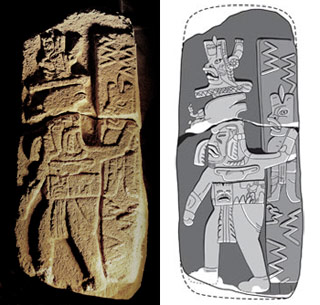




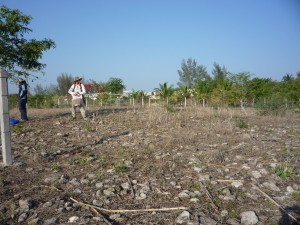



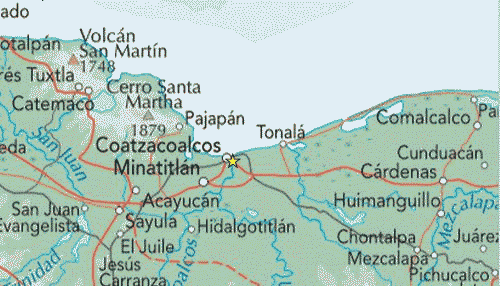




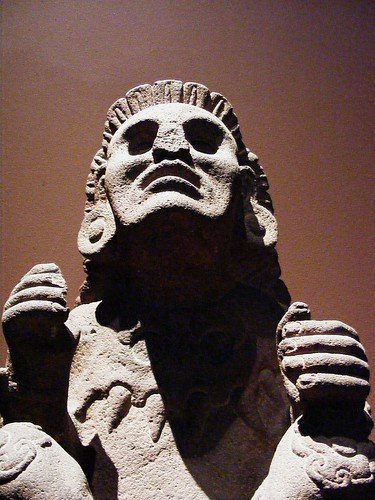






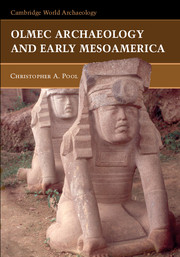






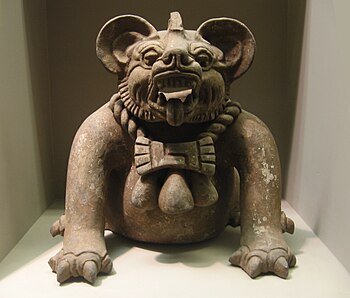

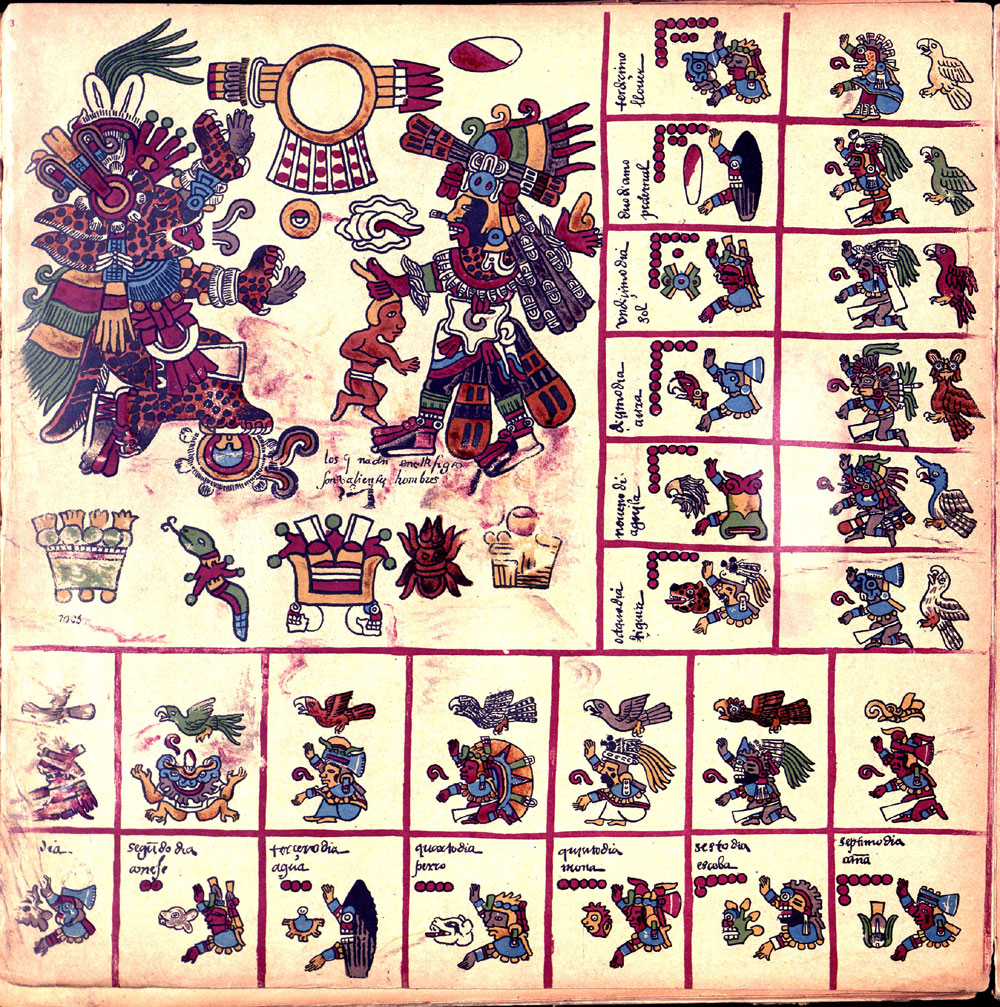

1 Comments:
buen articulo, muy interesante lo que hacen las conjeturas poco objetivas, y como contribuyen al mito del 2012.
saludos
Post a Comment
Subscribe to Post Comments [Atom]
<< Home